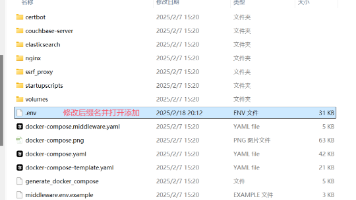【CI/CD】GitHub Actions 快速入门
在 GitHub Actions 里一般的操作步骤是:首先在项目中新建文件,然后在里面配置触发条件(比如 push 到 main 分支)、运行环境(如)、以及每个执行步骤(checkout 代码、安装依赖、运行测试、构建部署)。如果需要敏感信息,会在仓库的 Secrets 中配置,然后在 workflow 里引用。最后我会提交代码,GitHub 自动执行,并在 Actions 面板查看执行日志。实
·
🔑 GitHub Actions 使用流程(从头到尾)
1. 启用 GitHub Actions
- 打开 GitHub 仓库 → 点击 Actions 标签页。
- GitHub 会给你推荐一些常见的工作流模板(Node.js、Java、Python 等),也可以选择 自己新建 workflow。
2. 创建 workflow 配置文件
-
在项目根目录下新建:
.github/workflows/ci.yml -
这是 Actions 的核心配置文件,使用 YAML 语法描述 CI/CD 流程。
3. 配置 workflow 基本信息
示例:Node.js 项目自动测试
name: CI Pipeline # 工作流名称
on: # 触发条件
push: # 推送时触发
branches: [ main ]
pull_request: # PR 时触发
branches: [ main ]
jobs: # 一个 workflow 可以包含多个 job
build:
runs-on: ubuntu-latest # 运行环境(虚拟机)
steps: # job 中的每一步
- name: Checkout code
uses: actions/checkout@v3 # 拉取代码
- name: Setup Node.js
uses: actions/setup-node@v3
with:
node-version: '18' # 设置 Node 版本
- name: Install dependencies
run: npm install
- name: Run tests
run: npm test
4. (可选)添加环境变量 & secrets
-
如果需要连接数据库、部署到服务器,需要配置 Secrets:
- 打开仓库 → Settings → Secrets and variables → Actions → 新建
DEPLOY_KEY、DB_PASSWORD等。
- 打开仓库 → Settings → Secrets and variables → Actions → 新建
-
在 workflow 文件里这样引用:
- name: Deploy run: ssh user@server "deploy.sh" env: DEPLOY_KEY: ${{ secrets.DEPLOY_KEY }}
5. 提交代码,触发 workflow
-
提交
ci.yml到仓库:git add .github/workflows/ci.yml git commit -m "add github actions ci" git push origin main -
GitHub 会自动启动 Actions,你可以在 Actions 面板看到执行日志。
6. 查看结果 & 调试
- 每一步执行都会在日志中展示输出。
- 如果失败,可以点开对应步骤查看错误信息。
- 修改
.yml文件再 push 即可重新运行。
7. 扩展:常见使用场景
- CI(持续集成):跑单元测试、Lint 检查。
- CD(持续部署):构建并部署到服务器、云服务(如 AWS、Vercel、Docker Hub)。
- 自动化:定时任务(
on: schedule)、自动发布 npm 包、生成 changelog。
✅ 总结
在 GitHub Actions 里一般的操作步骤是:
首先在项目中新建.github/workflows/xxx.yml文件,然后在里面配置触发条件(比如 push 到 main 分支)、运行环境(如ubuntu-latest)、以及每个执行步骤(checkout 代码、安装依赖、运行测试、构建部署)。
如果需要敏感信息,会在仓库的 Secrets 中配置,然后在 workflow 里引用。最后我会提交代码,GitHub 自动执行,并在 Actions 面板查看执行日志。
实际开发中我常用它做 CI 测试和自动部署。
更多推荐
 已为社区贡献11条内容
已为社区贡献11条内容









所有评论(0)